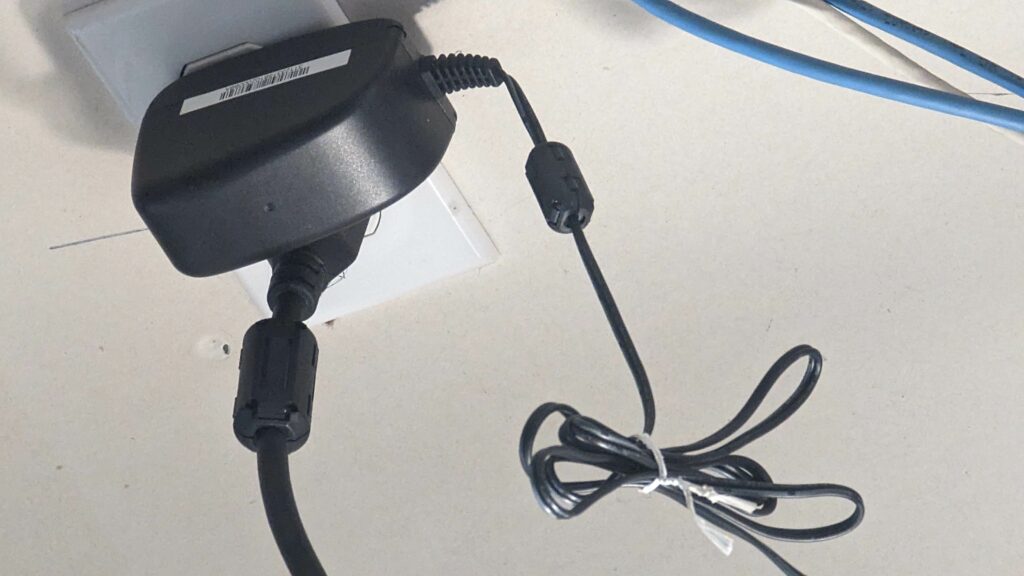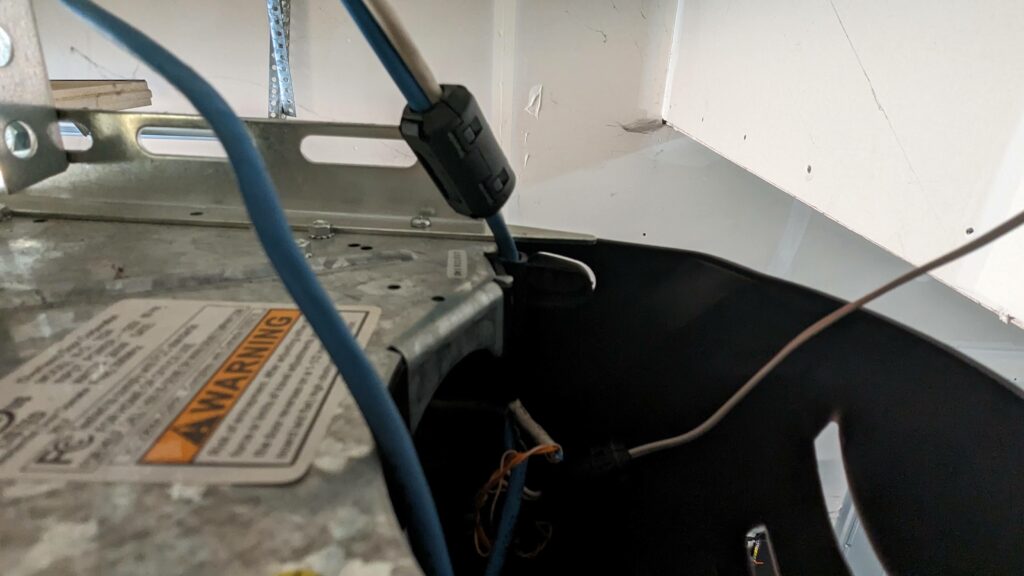
Not too long ago, a reader reached out to me about a range problem they were having with their garage door opener. He had implemented my DIY smart garage door opener solution using a Shelly 1, but it had severely reduced his garage door opener range. I tested my garage door range, with and without the Shelly, and sure enough, I had some reduced range too. I researched and tried a few different things. The solution in the end? Ferrite cores!
This page contains affiliate links. If you purchase an item using an affiliate link I will receive a small commission at no cost to you. Affiliates do not influence my recommendations. Read my disclosures for more information.
Garage Door Opener Range Background
I implemented the Shelly DIY smart garage door opener on both of my garage doors. The range on one of the doors wasn’t affected (I did eventually replace this garage door opener and ended up having to use a more sophisticated solution). Over time, however, the range on the other door did seem shorter than normal. I tried the following fixes:
- Replacing the batteries in the garage door opener
- Buying a “long-range” garage door opener transmitter
- Replacing the LED bulbs in the garage with CFLs and bulbs designed not to cause interference with garage door openers.
In the end, all of these devices added a little range, but nothing too drastic. For years, I just let it be. You could open and close the garage from outside of the garage, so it wasn’t too bad. Still, it always bothered me that the range of one of the garage doors was so much shorter than the other.
An email from a reader…
Then a reader emailed me that they couldn’t use my Shelly smart garage door opener solution. After implementing it, they couldn’t use the garage door opener outside the garage door at all! He also told me that when he unplugs the Shelly, it works fine. This piqued my interest.
What I found from my tests
The engineer in me had to look at this again. So, I went out and unplugged my Shelly smart garage door opener and tested it. Sure enough, the range of the opener did increase. I didn’t have it as bad as the reader, but unplugging the Shelly sure improved the range!
So, I assumed something with the Shelly was causing interference.
I moved the location of the Shelly farther away from the garage door opener. Still, the range was decreased.
Now, the 12V adapter powering the Shelly was plugged into the same outlet as the garage door opener. I didn’t have any other outlets close by. I got an extension cord and plugged the Shelly’s adapter into a different outlet. Sure enough, the range increased to the same distance as when the Shelly was unplugged.
The solution: Ferrite cores
- Package included: 20 cable clips, with 5 different size 3/ 5/ 7/ 9/ 13 mm inner diameter
- Application Occasion:Clip them on AC power lines,USB cable,mouse cable,keyboard cable,headset cable,video cable,audio cable,data cable
Turns out the problem is having the Shelly adapter plugged into the same outlet as the Garage door opener. This is strange to me because I had the exact same setup with my other garage door (both the Shelly and garage door opener plugged into the same outlet) with the same garage door opener model and it wasn’t affected.
Maybe there was something weird going on with one of the outlets. I’m still not sure. But I didn’t want to have an extension cord running along my ceiling so I thought about a solution that might work with the Shelly and the garage door opener plugged into the same outlet.
I noticed none of the adapters had any ferrite cores. Ferrite cores reduce RFI and EMI noise emanating from cables. So I bought a few to place on the cords around the garage door opener and Shelly to see if they’d help increase the range.
Testing the ferrite cores

I decided to test placing the ferrite cores on the adapters of both the Shelly relay and the garage door opener. I also placed them on the wires going from the Shelly to the garage door opener, and on the wires going from the garage door opener button to the garage door opener. I ran tests of range for each of these changes individually.
It’s important to note that in all cases, I placed ferrite cores on both ends of the cords. I found that all of the locations of ferrite cores made some difference. But by far, the most range difference was made by placing ferrite cores on the wires going from the Shelly to the garage door opener. This made my range almost as long as it was without the Shelly.

In the end, I left ferrite cores on the adapters and the wires going into the garage door opener controls. Problem fixed!
Final thoughts
If you are having some garage door opener range problems, be sure to look into using ferrite cores. You should still also check the batteries in your garage door opener remote and try replacing the lighting if they are LEDs. But if those don’t work, try some ferrite cores. They worked for me!
Interested in supporting HomeTechHacker?
Have you found the content on this site useful? If so, are you interested in supporting me and this site? There’s no obligation of course, but I would really appreciate any support you can give. Below are a few ways you can show support:
- Share this site with your friends and on social media (use the sharing links at the end of this page for your convenience)
- Subscribe to this site
- Purchase one of my books, The Personal Cybersecurity Manual, The Home Network Manual or The Smart Home Manual, for yourself or as a gift
- Put a link to HomeTechHacker on a site you have access to. Be sure to let me know about it!
- Enroll in HomeTechHacker Academy for free and premium online home technology courses.
- Reach out to me via my contact page or Twitter and let me know something I should write about
- Shop at Amazon through my affiliate links and ads on these pages. See my disclosures for more details about affiliate links. You can also just shop from one of the links below:
- HomeTechHacker Shop: This is a listing of products that I use, have reviewed, and that I recommend
- HomeTechHacker Technology Advisor: This suite of tools will give you customized home technology product recommendations based on your needs
- My Amazon affiliate link: Just click on this link to go to Amazon and shop
Thank you! I really appreciate it!




Question, I power the Shelly from the 24v inside the opener. I see the biggest range reduction from the WYZE camera that is close to the opener. It is powered ultimately from the same outlet as the opener, but through a power strip. Do you think Ferrite Cores on the power wires to the camera will make a significant difference?
Hmm, many power strips have EMI/RFI filters built in, but I think Ferrite cores would be worth a try.